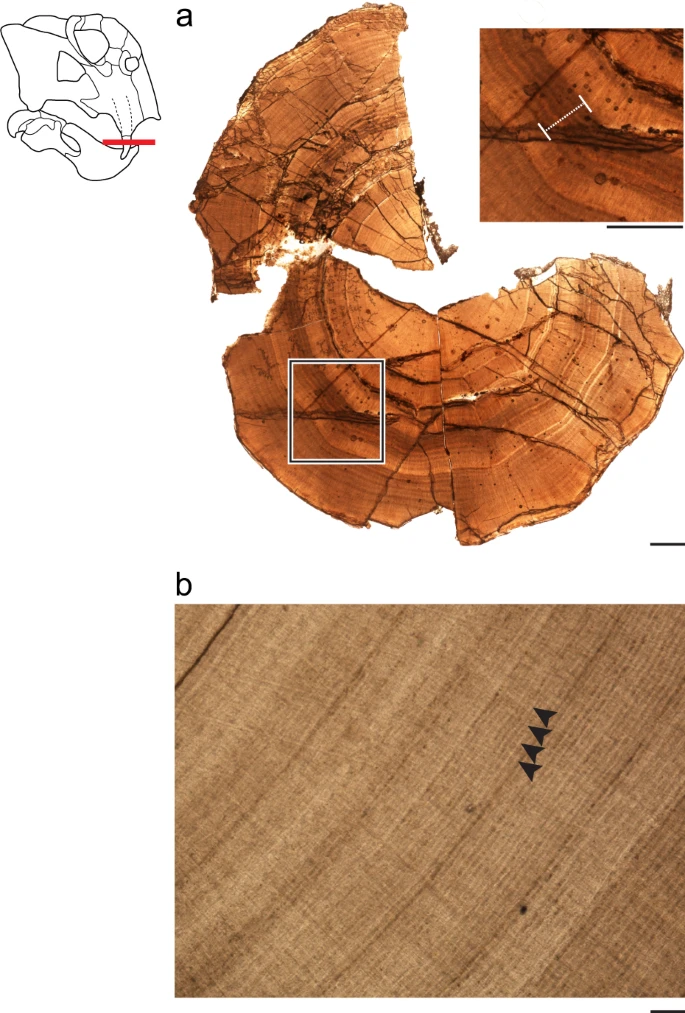DOWN TO EARTH EXTRA - October 2020
The latest edition of Down to Earth Extra is HERE.
And you can read it below.
Talks, field trips and events organised by west country geological organisations are publicised on this blog. Discussion about geological topics is encouraged. Anything of general geological interest is included.
 |
| Diamond crystal containing a garnet and other inclusions (Credit: Stephen Richardson, University of Cape Town, South Africa) |
 |
| a A cross-section of Antarctic specimen UWBM 118025 with a “hibernation zone” highlighted at a higher magnification. Scale bars = 1000 μm. b Well-preserved regular incremental growth marks from the South African specimen UWBM 118028, lacking “hibernation zones”. Arrows denote individual lines with an average spacing of 16–20 μm. Scale bar = 100 μm. The authors argue that this indicates the Antarctic creatures were hibernating - or something very like it. Which is not really surprising but nice to have some evidence for it. The original article is HERE. |